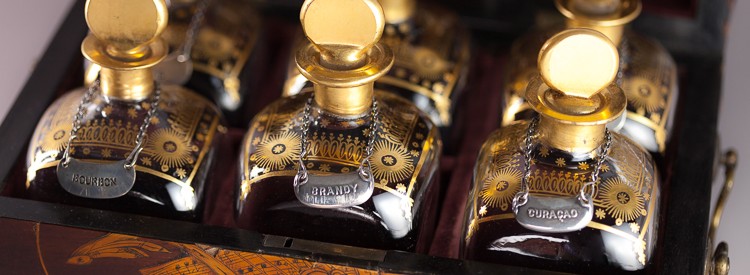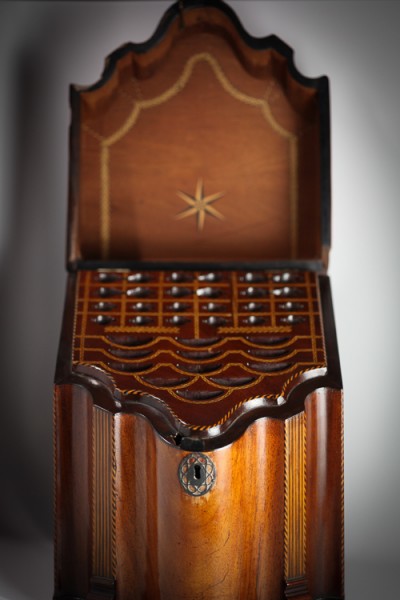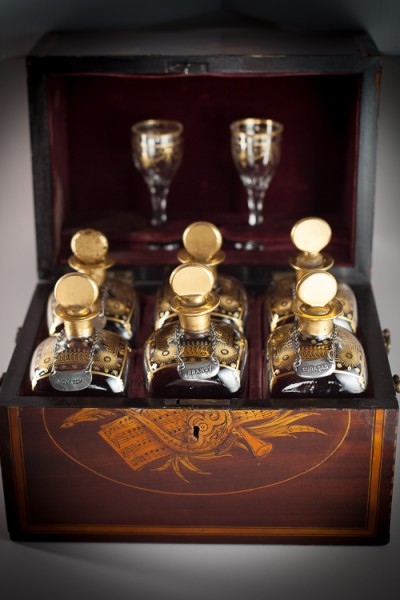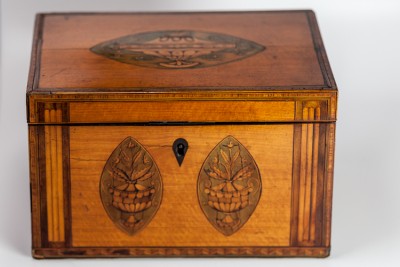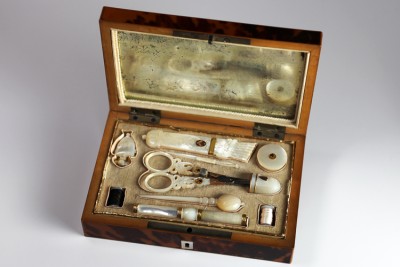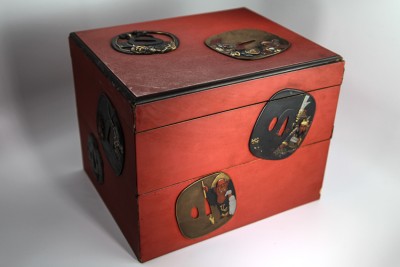Boxes in the collection reflect the European and Asian influences prevalent at Hill-Stead. Included are 18th- and 19th-century English tea caddies, knife boxes and letter boxes, all with inlaid marquetry designs. Sewing boxes constructed of wood and tortoise shell – many adorned with ivory – combine the practical with the ornamental. Pierced and engraved brass boxes are exhibited, as well as two boxes with work by André Charles Boulle. A red lacquer Obento box is on display in the Morning Room.
English Inlaid Boxes
Knife Box
Mahogany & Silver, 18th century
Knife fittings intact, with spaces for 24 knives as well as 12 spoons
The knife-box or knife-case, a receptacle for knives and other table cutlery, is an example of the mechanical ingenuity of the English cabinet-makers of the last quarter of the 18th century. These graceful receptacles, often made in pairs, are typically just as elaborately inlaid on the inside as the outside, in order to showcase the handles of knives and the bowls of spoons.
Liquor Case
Mahogany, Brass, Glass & Silver
Lined with velvet
This liquor case is another fine box in the museum collection. It is fitted with compartments for six gilded glass bottles and two gilded and fluted stemmed glasses. The case is inlaid with a design of lyre, horns and sheet music, and lined with red velvet.
Tea Caddy
Satinwood box with marquetry ornamentation. Two lidded mahogany compartments inside are lined with silver tea paper, believed to preserve tea by inhibiting moisture
French Sewing Boxes
In the early 18th century, European workboxes were decorative and elaborate objects with mother-of-pearl, ivory, gold or brass fittings. Boxes had lift-out trays lined with velvet or satin with receptacles formed for specific tools (thimbles, scissors, and bodkins, for example.)
Fancy boxes, such as those collected by the Popes, were for the “genteel” class who did needlework as a social activity. Many thimbles and sewing tools were made of precious metals, and were given as gifts. Based on society rules, young men couldn’t give their sweethearts personal gifts (such as clothing or jewelry), so in addition to flowers, books or sweets, sewing tools were considered acceptable gifts.
Sewing Box
Wood with light golden tortoise shell covering, edged in ivory trim interior with 12 compartments, lined in ivory silk tools bear the enamel pansy motif of the Palais Royal.
In the 18th century, Louis d’Orleans rebuilt a wing of the royal palace as an arcade of shops and restaurants, and renamed the building from Palais Cardinal to Palais Royal. Palais Royal shop artisans of the 1780s sold the best quality products, and the area became the place to be seen. The most prestigious of the Palais Royal sewing boxes are those with an enamel pansy motif on the tools. The pansy is French “pensee”, meaning “think of me”.
Obento Box
Japanese, lacquer
Two-tiered lunch box with applied ornamentation
This Obento box boasts exterior decorations of nine tsubas (sword guards) and two kozukas (utility knife guards).
